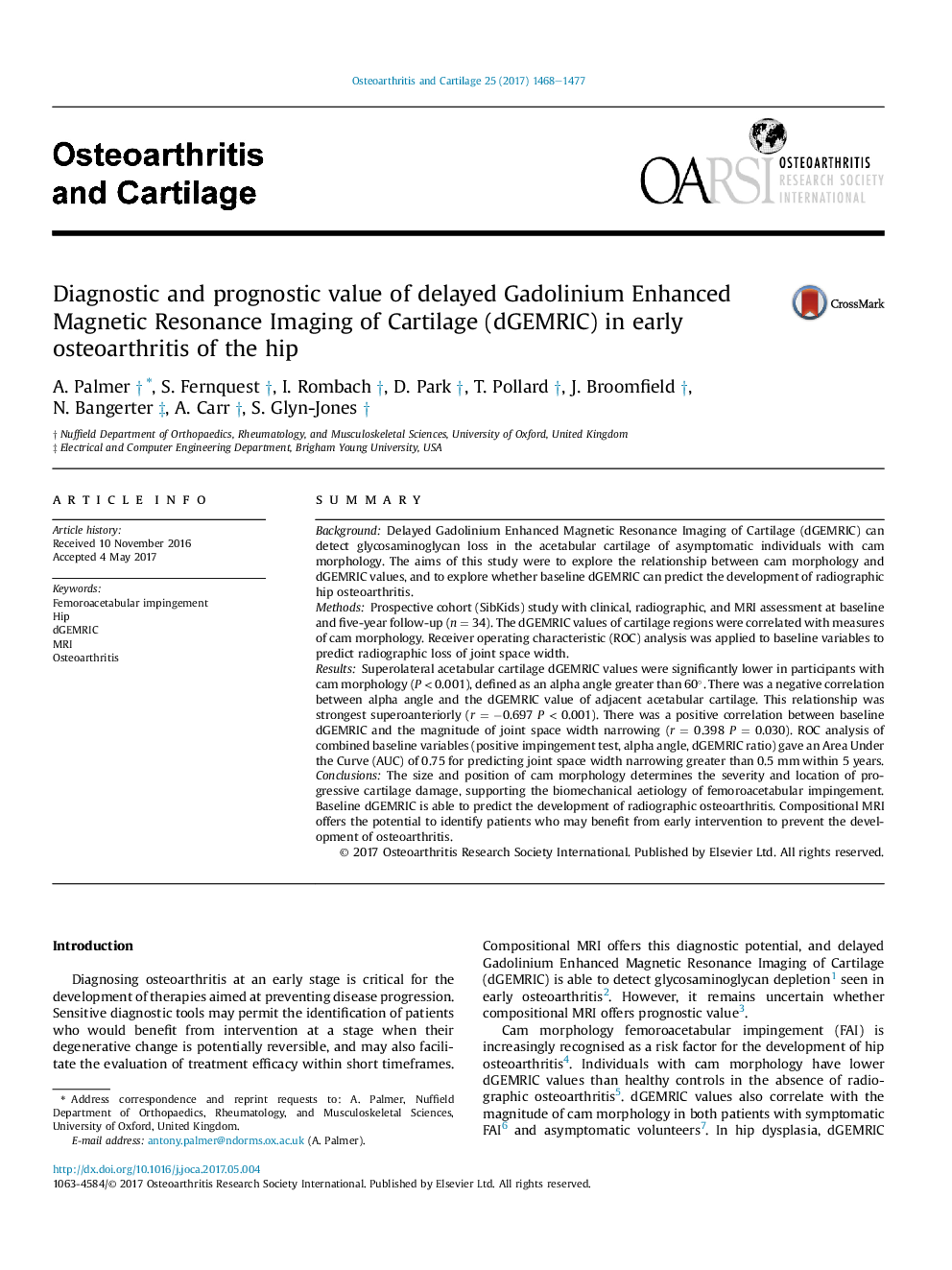| کد مقاله | کد نشریه | سال انتشار | مقاله انگلیسی | نسخه تمام متن |
|---|---|---|---|---|
| 5669242 | 1407953 | 2017 | 10 صفحه PDF | دانلود رایگان |

SummaryBackgroundDelayed Gadolinium Enhanced Magnetic Resonance Imaging of Cartilage (dGEMRIC) can detect glycosaminoglycan loss in the acetabular cartilage of asymptomatic individuals with cam morphology. The aims of this study were to explore the relationship between cam morphology and dGEMRIC values, and to explore whether baseline dGEMRIC can predict the development of radiographic hip osteoarthritis.MethodsProspective cohort (SibKids) study with clinical, radiographic, and MRI assessment at baseline and five-year follow-up (n = 34). The dGEMRIC values of cartilage regions were correlated with measures of cam morphology. Receiver operating characteristic (ROC) analysis was applied to baseline variables to predict radiographic loss of joint space width.ResultsSuperolateral acetabular cartilage dGEMRIC values were significantly lower in participants with cam morphology (P < 0.001), defined as an alpha angle greater than 60°. There was a negative correlation between alpha angle and the dGEMRIC value of adjacent acetabular cartilage. This relationship was strongest superoanteriorly (r = â0.697 P < 0.001). There was a positive correlation between baseline dGEMRIC and the magnitude of joint space width narrowing (r = 0.398 P = 0.030). ROC analysis of combined baseline variables (positive impingement test, alpha angle, dGEMRIC ratio) gave an Area Under the Curve (AUC) of 0.75 for predicting joint space width narrowing greater than 0.5 mm within 5 years.ConclusionsThe size and position of cam morphology determines the severity and location of progressive cartilage damage, supporting the biomechanical aetiology of femoroacetabular impingement. Baseline dGEMRIC is able to predict the development of radiographic osteoarthritis. Compositional MRI offers the potential to identify patients who may benefit from early intervention to prevent the development of osteoarthritis.
Journal: Osteoarthritis and Cartilage - Volume 25, Issue 9, September 2017, Pages 1468-1477